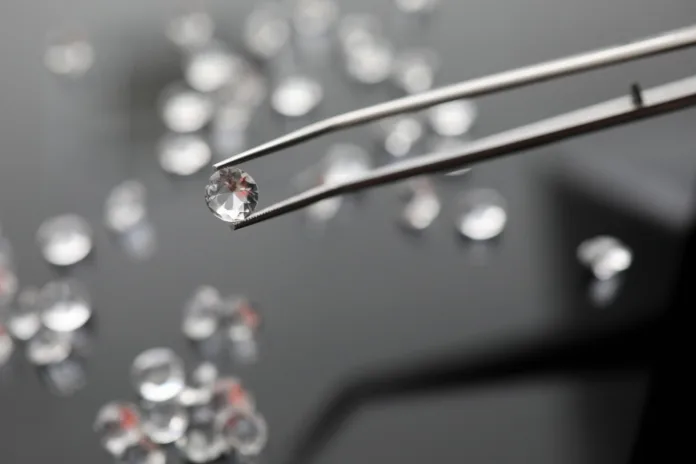University of Tokyo chemists grow flawless nanodiamonds using low-pressure electron beam
For more than two decades, Professor Eiichi Nakamura and his team at the University of Tokyo have pursued a dream many dismissed as impossible: using electrons to create diamonds. Now, in a landmark discovery, chemists have unveiled a new low-pressure method to grow flawless nanodiamonds with the aid of an electron beam.
Traditionally, making diamonds has demanded extremes — crushing carbon under immense pressures of tens of gigapascals or heating it to thousands of degrees. Another path, chemical vapour deposition, produces diamond in unstable conditions. By contrast, Nakamura’s group set out to rewrite the rules.
Their method begins with adamantane, a cage-like carbon molecule with a geometry strikingly similar to diamond’s own atomic framework. Both share tetrahedral symmetry, making adamantane a natural candidate for transformation. By carefully preparing adamantane crystals and bombarding them with a transmission electron microscope (TEM) beam, the researchers discovered they could strip away hydrogen atoms, allowing carbon atoms to reassemble into a diamond lattice.
“The real problem was that no one thought it feasible,” Nakamura admitted. For years, the consensus was that organic molecules disintegrate under electron beams, their fragile bonds obliterated rather than rearranged. His persistence has proved otherwise.
Using TEM at energies between 80 and 200 kiloelectron volts and temperatures ranging from 100 to 296 kelvins, the team irradiated submicrocrystals of adamantane for tens of seconds. What they observed was remarkable: defect-free cubic nanodiamonds forming in real time, accompanied by bursts of hydrogen gas. Under prolonged exposure, the structures reached up to 10 nanometres in diameter.
Embed from Getty Images
Time-resolved images captured the gradual conversion from adamantane oligomers to spherical nanodiamonds, the pace of transformation governed by the rate of hydrogen removal. The process was precise, reproducible, and yielded pristine results. Attempts with other hydrocarbons failed, underscoring adamantane’s unique suitability.
For Nakamura, who has spent 30 years in synthetic chemistry and 15 years in computational quantum chemistry, the sight was vindication. “Computational data gives you ‘virtual’ reaction paths, but I wanted to see it with my eyes,” he said. “This is the ultimate demonstration that electrons do not destroy organic molecules but let them undergo well-defined chemical reactions.”
The implications extend far beyond diamonds themselves. The study suggests electron irradiation could control chemical reactions with unprecedented precision, opening new avenues in electron lithography, surface engineering, and high-resolution microscopy. The findings may also explain how nanodiamonds form in nature — in meteorites or uranium-rich rocks exposed to cosmic rays or high-energy particles.
Perhaps most tantalisingly, defect-free nanodiamonds have potential in cutting-edge technologies. Doped nanodiamonds can act as quantum dots, essential components for quantum computers and ultra-sensitive sensors. The ability to grow such materials under controlled lab conditions could accelerate progress in quantum science.
For Nakamura, the breakthrough is both scientific and deeply personal. “My research since 2004 has been a constant battle to show organic molecules don’t just decompose under electron beams,” he reflected. “This 20-year dream has finally come true.”
The diamonds may be measured in nanometres, but the achievement reshapes how chemists and physicists will think about electrons, matter, and the hidden possibilities of controlled reactions. What was once dismissed as fantasy now gleams as reality.
